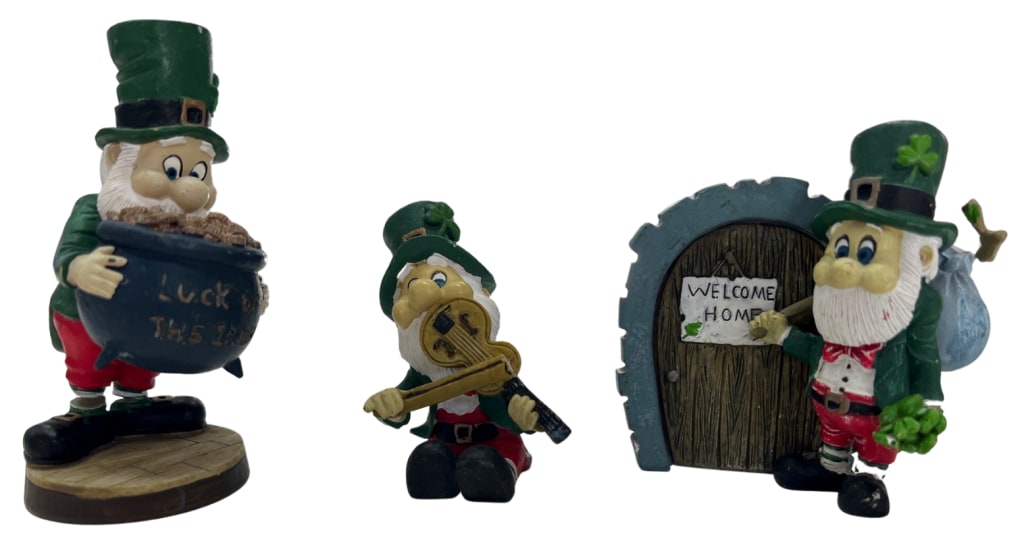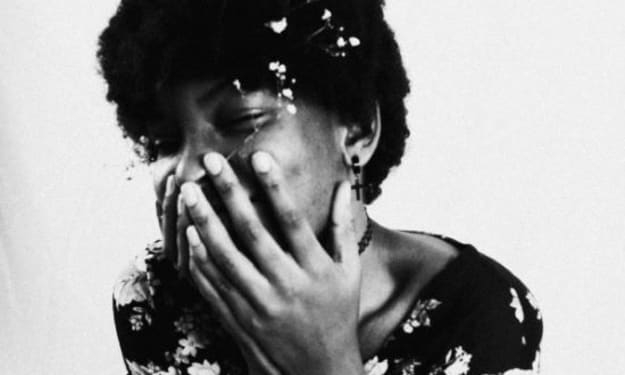10 Things You Should Know About Leprechauns
There’s more to the little green tricksters than meets the eye

Irish legends describe leprechauns as short, bearded men wearing green suits with a hat. It doesn't sound like a typical faerie description, but that's precisely what a leprechaun is. Leprechauns are part of the Faerie Folk —royalty descended from the Tuatha Dé Danann, often referred to by the Irish as 'wee folk' or 'little people.'
The Tuatha Dé Danann were god-like creatures with supernatural powers. Their origins were mysterious —they may have come from the North, or the West, from Greece, or perhaps Atlantis. Regardless of their mysterious background, the Tuatha Dé Danann came to represent Ancient Ireland, their race inhabiting Ireland for more than 4,000 years. Today, leprechauns are the most easily recognized faeries of the Tuatha Dé Danann.
Folklore usually contains a moral or lesson, and in the case of a leprechaun, the warning is about greed and the follies of get-rich-quick schemes.

10. Origin
Scholars have traced oral leprechaun legends back to the 8th Century. But no one seems quite clear on how they came into being. With no female or baby leprechauns, their origin remains mysterious.
Some folk stories claim that leprechauns are unwanted fairy children. Other accounts report that leprechauns are fairies who have fallen from grace. In Irish Wonders The Ghosts, Giants. Pooka, Demons, Leprechauns, Banshees, Fairies, Witches, Widows, Old Maids and other Marvels of the Emerald Isle, David Russell McAnally put forth the theory that leprechauns might be the children of evils spirit and demented faeries.
Regardless of their origins, like other fairies, leprechauns don't seem to age - they are perpetually older men.

9. Rustic in red
Everyone recognizes the charming image of leprechauns wearing a green suit and hat. But did you know that the first legends about leprechauns describe them as being dressed in red?
Banished from Ireland, the Tuatha Dé Danann were forced to live underground. As Tuatha Dé Danann royalty, leprechauns too required underground dwellings. These original leprechauns typically wore red. These rustic leprechauns were untidy in appearance and came with a reputation as grumpy, possibly evil, and carefully hoarded their gold pots.
These red-suited leprechauns appear more like their cousins, the clurichaun, than the leprechauns we know today. The clurichaun are drunk, rowdy, and raucous, and get up to all sorts of mischief, often completely clearing out wine cellars. Another theory suggests there is no such creature as the clurichaun, arguing that a clurichaun is simply a drunken leprechaun.

8. Good, evil, or mischievous?
Although today's leprechauns have a reputation for being jolly and mischievous, accounts of their nature, like all oral folklore, have varied over the years.
Although some leprechauns would adopt a family if the offerings (food, drink, and tobacco) were worthy and reciprocated with a little kindness that would make life easier, that was not the norm.
Most leprechauns in red didn't have a good reputation— they were depicted as nasty, unkempt creatures who acted out of spite. Instead of being harmless, their pranks were vengeful; they spoiled milk, tossed babies from their bassinets, and even caused children to talk backward.

7. Changing their luck
As time passed, both the leprechaun's reputation and costume changed. Leprechauns first appeared in green in the early 1900s. This change enabled the leprechaun to become a symbol and celebration for all things Irish. Although the pot of gold is still present, the stigma of being greedy has disappeared. Instead, leprechauns have become grinning jovial chaps who like to play a prank or two.
This change coincided with the appearance of the four-leaf clover in leprechaun lore. It is said the bearer of a four-leaf clover can see fairies. Ireland is said to have the most four-leaved clovers worldwide, yet for every four-leaf clover, there are about 10,000 three-leaf clovers. Making the four-leaf clover the perfect symbol for the 'lucky' leprechaun.

6. You can't trust a leprechaun
Leprechauns are renowned for their ability to make mischief. You should never trust a leprechaun, and you need to be careful as they love to play tricks. And, if you are clever enough to catch a leprechaun, don't ever take your eyes off them! Leprechauns are also known for their astonishing good luck - both in avoiding capture and playing pranks.
In one well-known story recounted in Spirits, Fairies, Leprechauns, and Goblins by Carol Rose, a lucky man caught a leprechaun and asked for his pot of gold. With some reluctance, the leprechaun pointed out a tree. Deep down beneath the tree roots, the man would find the treasure, the leprechaun told him.
The man required a shovel to dig up the treasure, and other similar-looking trees surrounded the tree. To make sure he would dig at the base of the correct tree, the man let the leprechaun go so he could tie a red ribbon around its trunk. Then he raced home to fetch his shovel.
When the man returned, he found every single tree sporting a red ribbon.

5. They hide their gold
Leprechauns are known to hide their pot of gold at the end of a rainbow. A rainbow's end is impossible to find, making it the perfect hiding place from prying humans. This creative hiding spot means that the only way to steal a leprechaun's gold is to capture one so that a leprechaun will exchange his gold for his freedom.
Legend says if you manage to trick a leprechaun into parting with his gold, you may not be able to enjoy it. The pot of gold is also fairy gold, and fairy gold rarely survives long in the human world. Leprechauns' gold often turns to ash, or a useless object, like a button, hours after your encounter with a leprechaun.
A trapped leprechaun may offer three wishes instead of giving up his pot of gold - but be careful. You might not end up with what you think you asked for. Leprechauns are tricky and will twist your words to suit themselves.

4. Celebrating leprechauns
St. Patrick's Day, March 17, was once a religious holiday. The holiday celebrated St. Patrick, a 5th Century Christian Bishop who converted Irish pagans. Now the religious festival is a cultural day to celebrate all things Irish. Front and foremost is the leprechaun, who has become the modern face of St. Patrick's Day.
Wearing green on St. Patrick's day is supposed to bring the wearer good luck, but it's not the only reason. If you ever get pinched on St. Patrick's Day, you likely forgot to wear green. Leprechauns love to give humans a pinch, especially on St. Patrick's Day. Donning green clothing will keep you safe as the wearer is invisible to leprechauns.
Along with their part in St. Patrick's Day, leprechauns also have a special day on May 13. You can celebrate Leprechaun Day in any way you like. From telling leprechaun stories, dressing a leprechaun, even organizing a leprechaun hunt!

3. Leprechauns are an officially protected species
While leprechauns were once widespread over Ireland, now they are hard to spot. Some say they live in rural areas away from people, making their homes in underground caves and tree hollows.
In the Irish town of Carlingford, leprechauns are an officially protected species. In 2009 the town passed a law to keep the wee folk safe. If you ask the locals of Carlingford, they will tell you that the last remaining leprechauns live in their town.
Tourists can visit Carlingford Leprechaun & Fairy Cavern, where Kevin, The Leprechaun Whisperer, will enthrall you with leprechaun stories. After the storytelling, you can go below ground into the caverns where the leprechauns and other fairies live.

2. The leprechauns of Portland, Oregon
In the City of Portland, Oregon, there is a small leprechaun colony. In 1947, a reporter, Dick Fagan, spotted a leprechaun digging a hole in the middle of the road. Fagan captured the leprechaun, earning himself a wish. Fagan claims to have wished for a park but failed to specify its size. The hole in the ground, in the middle of a medium strip, became Mill Ends Park.
Over the years, the park décor has ranged from the simple to the complex, from potted flowers to a small swimming pool with a diving board for butterflies.
Mill Ends Park received recognition as the world's smallest park by the Guinness Book of World Records in 1971 and became an official city park in 1976.

1. You can go on a real-life Leprechaun Hunt
Trapping leprechauns is not an easy task, and even the best-laid plans sometimes fail. So, if you're still keen on chasing a leprechaun's pot of gold, you're going to need a good leprechaun trap— or you can join the Great Leprechaun Hunt.
Held annually in Carlingford, this charity event issues licenses to hunt leprechauns - and you get to keep any you catch! Along with their hunting license, hunters receive a treasure map to help them locate pots—and if you're lucky, one of them may hold a gold bar.
May the luck of the Irish be with you!

First published in The Last Nerd
Sandi Parsons is an award-winning school librarian with over 20 years experience working in educational libraries. She lives with her favorite husband and two problem puppies. She hasn't spotted a leprechaun – but she hasn't given up looking yet!
About the Creator
Sandi Parsons
Sandi Parsons lives and breathes stories as a reader, writer, and storyteller. Subscribe to my newsletter & receive my free ebook The Last Walk → https://bit.ly/3cGvsPB






Comments
There are no comments for this story
Be the first to respond and start the conversation.